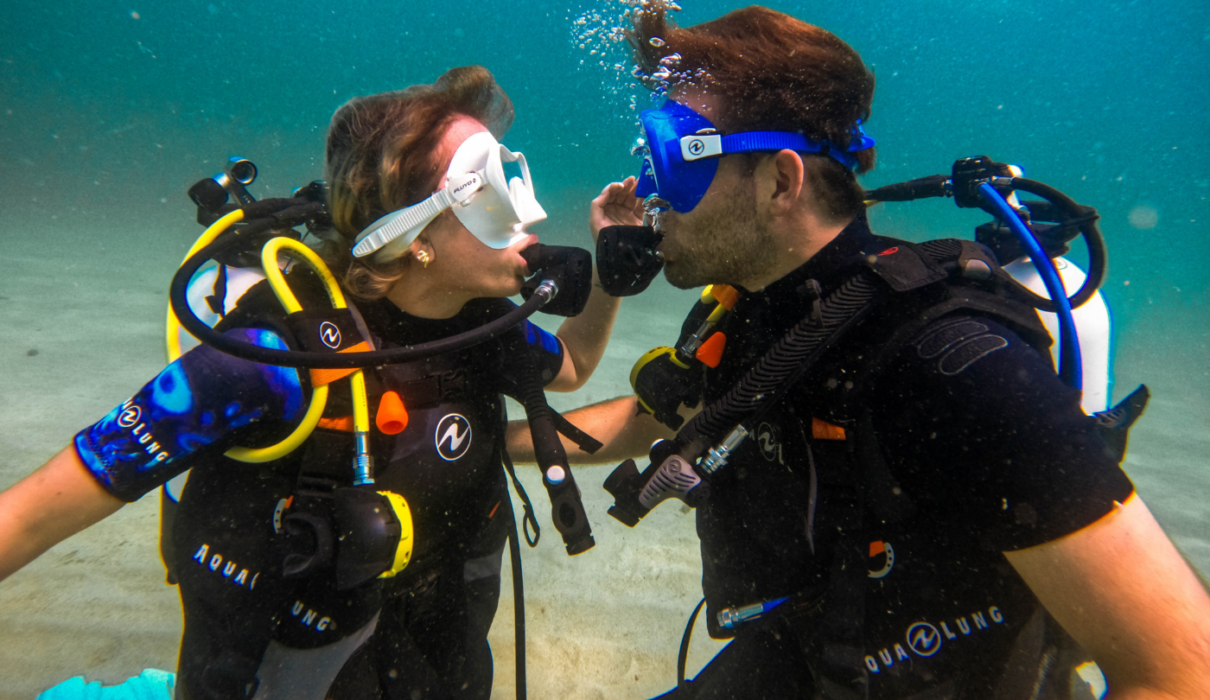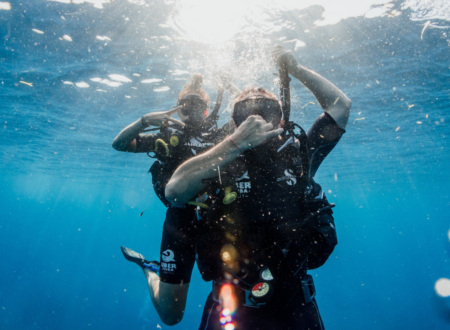Have you ever looked at the deep blue ocean and wondered what it’s like to explore its depths? Believe it or not, scuba diving isn’t just for experts or swimmers. A ‘Try Scuba Diving’ session is your golden chance to experience the feeling of breathing underwater. It’s designed for beginners, ensuring that everyone, regardless of their swimming abilities, can safely explore the ocean’s unseen beauty. With professional guidance, top-notch safety measures, and a focus on ensuring a comfortable experience.
No Swimming Skills Needed!
One of the many misconceptions about scuba diving is that one needs to be an excellent swimmer. But in reality, try diving experiences are designed to introduce non-divers to the underwater realm in a safe and controlled manner. Under the watchful eye of a certified instructor, you’ll learn basic scuba techniques and safely explore shallow waters, all without needing to be a strong swimmer. However swimming ability is essential for scuba diving courses because it helps build confidence in the water. As you progress through a course, you’ll encounter various underwater situations that may require swimming skills to navigate.
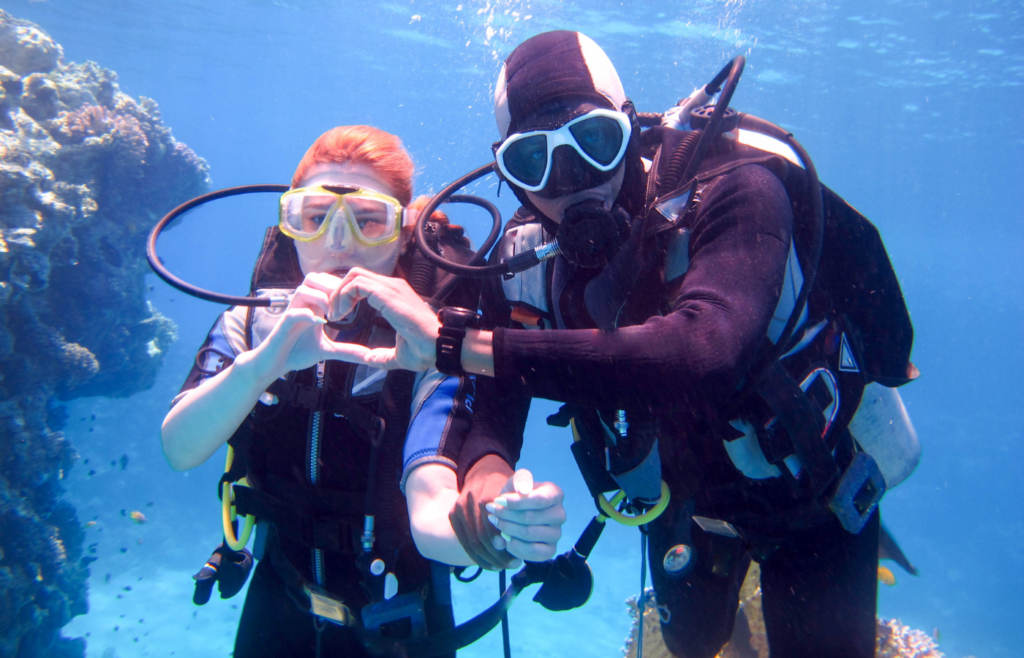
Ready to dive but not sure what skills you need? No worries! In a ‘Try Scuba Diving’ session, you’ll learn easy but important scuba diving skills to help you explore underwater safely and have fun. Let’s look at what you’ll learn!
Breathing Underwater: It’s Easier Than You Think
The idea of breathing underwater may sound like something out of a sci-fi movie, but it’s a skill you’ll master during your first dive. Using a device called a regulator, you’ll learn to inhale and exhale just as you do on land. And, trust us, there’s nothing quite like the sensation of your first underwater breath!The idea of breathing underwater may sound like something out of a sci-fi movie, but it’s a skill you’ll master during your first dive. Using a device called a regulator, you’ll learn to inhale and exhale just as you do on land. And, trust us, there’s nothing quite like the sensation of your first underwater breath!
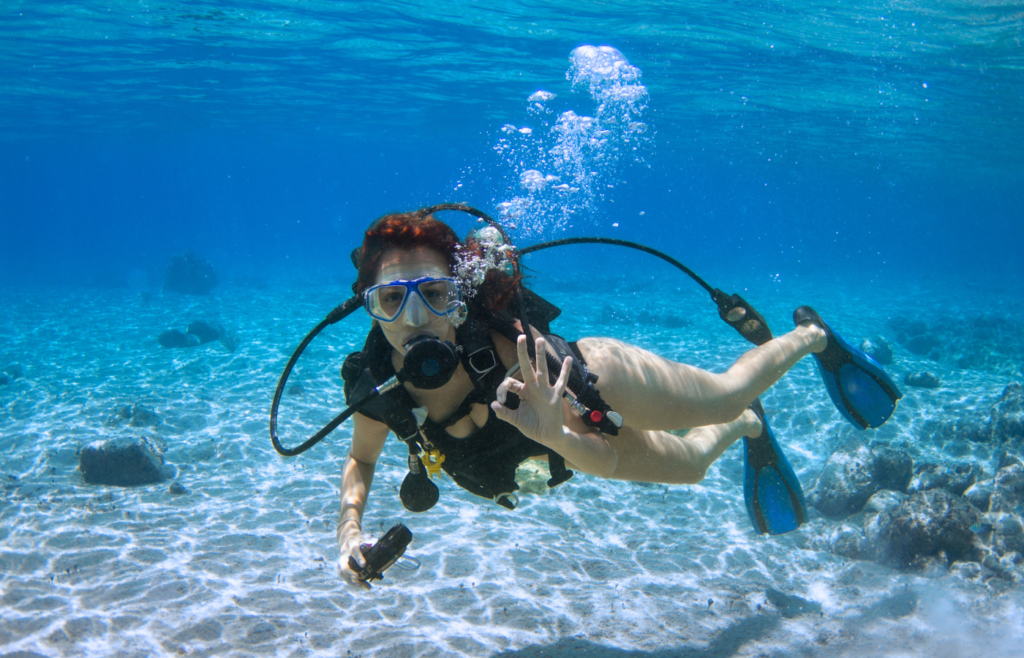
Regulator Recovery and Clearing
Regulator clearing is a vital skill that ensures an uninterrupted air supply, Sometimes the regulator might accidentally slip out of your mouth. Don’t panic! You’ll be taught techniques to effortlessly recover it and clear water from it. You’ll learn simple techniques to clear water from your regulator, making every breath underwater as natural as on land.
Mask Clearing: Keeping Your Vision Clear
A fogged or flooded mask is not something that has to be considered as a danger. But vision of your mask can interrupt your underwater sightseeing. Luckily with a simple technique, you’ll learn how to keep your view undisturbed, ensuring you won’t miss anything.
Equalization Technique
When you go deeper underwater, the pressure increases. This can make your ears feel like they’re “popping” or getting full, similar to when you’re on an airplane. Equalization is the process of balancing this pressure so your ears feel comfortable.
In your ‘Try Scuba Diving’ session, you’ll learn different techniques to equalize. One common method is pinching your nose and gently trying to blow out while keeping your mouth closed, also known as the Valsalva maneuver. But don’t worry, your instructor will guide you on when and how to do this, ensuring you’re comfortable throughout your dive.
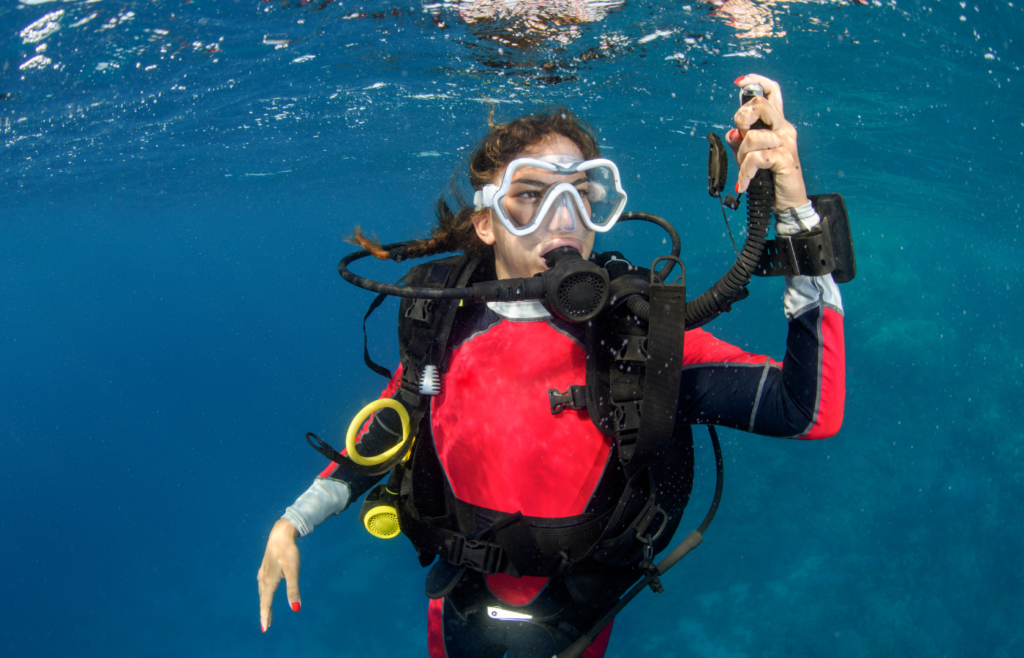
Functionality of the Buoyancy Control Device (BCD)
The Buoyancy Control Device, or BCD for short, is like your personal flotation helper when you’re scuba diving. Think of it as a special vest that divers wear. It can be filled with air to help you float or have air released to help you sink. By adjusting the amount of air in the BCD, divers can choose to float at the surface, hover in the middle of the water, or gently sink to the bottom.
This control is crucial. When divers want to look at something interesting underwater, they don’t want to sink to the ocean floor or float up to the surface. The BCD lets them stay in one place, making their dive more enjoyable and safe. Plus, it has pockets and clips to carry other diving gear. So, the BCD isn’t just about buoyancy; it’s an essential tool for a smooth diving experience!
Essential Hand Signals Underwater
When you’re underwater, you can’t just shout out to your buddy or instructor. That’s where hand signals come in. Think of them as the sign language of the sea. They’re a way to “talk” and communicate essential messages while you’re diving.
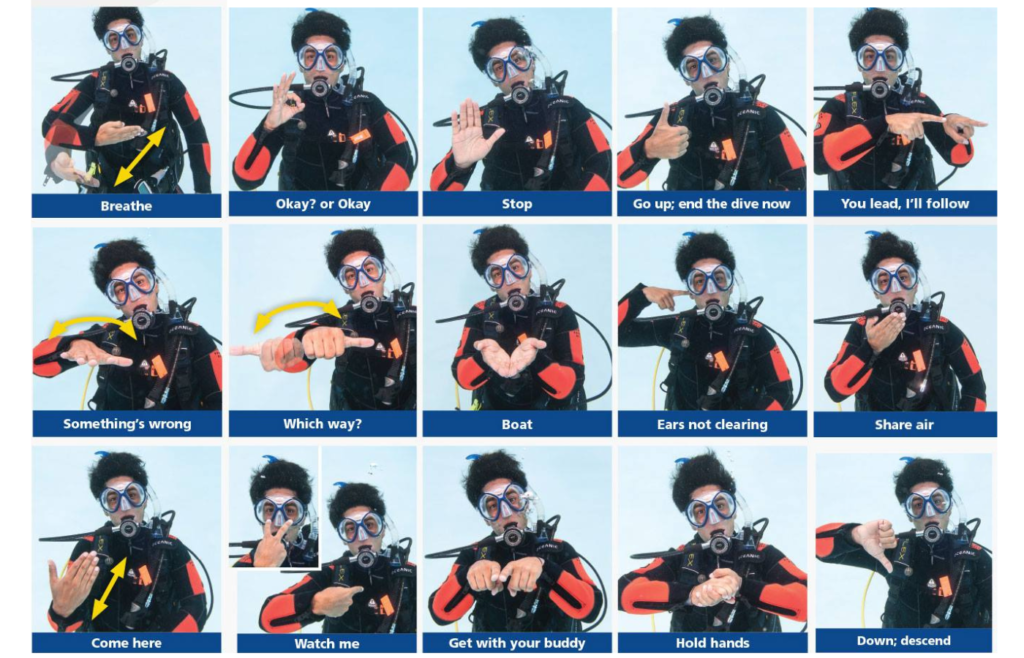
For someone trying scuba diving for the first time, these hand signals might look like some secret diver code. But they’re straightforward and easy to pick up. For instance, a thumbs up doesn’t mean “everything’s great” like it does on land. In the diving world, it means “I want to go up to the surface.” During your ‘Try Scuba Diving’ session, your instructor will introduce you to these key signals. They’ll ensure you’re comfortable using them and understanding them before you dive deep. This way, even if your mouth is occupied with a breathing regulator, your hands will keep the conversation going.
A ‘Try Scuba Diving’ session isn’t just about floating with the fishes. It’s a comprehensive introduction to essential skills that ensure safety and enjoyment. All things considered, diving is not just for the experts. With the essential skills you learn during a ‘Try Scuba Diving’ session, you’re prepared to explore the ocean’s wonders. It’s a indication that with the right knowledge and guidance, the sea’s beauty is accessible to all.. Dive in, and let the adventures begin!

